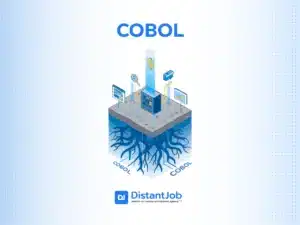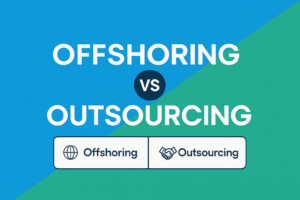Contractual and temporary work arrangements in the IT industry continue to gain momentum. The gig economy and the need for companies to scale up or down quickly mean employers must be flexible with their staffing.
However, finding the right talent on demand isn’t always straightforward. Granted, there is an abundance of independent contractors. But the ‘one’ with the specialized skill you need at that moment may be unattainable.
That is why, in some cases, a reliable option is contract-to-hire. This arrangement allows you to assess the qualities of a contractor up close before deciding whether or not to extend the relationship. As a result, you can have easy access to that specialized knowledge.
Contract to hire is the answer for businesses that need to evaluate candidates’ performance before making permanent offers, those that don’t have 100% clarity on the amount of work being offered, and those that wish to minimize risk. It makes the most sense for highly- specific focused jobs, for companies that have seasonal work, and for companies that can’t afford to pay a full salary along with benefits and all the other costs that come with full-time staff.
Want to know more about this hiring option and whether you should adopt it to find top developers? Keep reading as we discuss this employment strategy’s pros and cons.
What is Contract-to-Hire?
Contract-to-hire, or temp-to-hire, is a hiring arrangement where employees work as contractors for a specific period (typically three to 12 months) with the possibility of permanent employment.
This is how it works: an employer (usually through a staffing agency) offers temporary employment to a job seeker. That means the employee will work for the company within the specified period and may or may not get employee benefits.
At the end of the contract, the employer will determine if the employee is a fit. If they are, a permanent offer will be extended with full benefits. If not, the employee will leave the company.
However, a contract-to-hire arrangement shouldn’t be confused with a regular contract hire. In a straightforward contractual arrangement, the candidate is an independent contractor or freelancer, not an employee. They won’t get any employee benefits and aren’t seeking permanent employment.
For example, after the project, the developer leaves to take on another one at a different company.
Contract to Hire vs Full-Time Hiring: Key Differences
| Factor | Contract to Hire | Full-Time Hiring |
|---|---|---|
| Risk Level | Lower hiring risk | Higher commitment risk |
| Cost | Lower initial costs | Higher upfront investment |
| Flexibility | High workforce flexibility | Limited flexibility |
| Time to Fill | Faster hiring process | Longer recruitment cycle |
| Candidate Quality | Mixed (some prefer stability) | Often higher for permanent roles |
When Contract to Hire is Right for Your Business
There are still very valid reasons and situations when contract-to-hire is needed. For highly specialized technical roles, real-world performance often tells you more than any interview can. The same goes for senior leadership hires: cultural alignment at that level can make or break a team, and a trial period lets both sides confirm it.
In ultra-niche areas where the talent pool is thin, a contract phase gives you a way to secure scarce expertise quickly while ensuring the person truly matches your needs before you commit long-term.
Contract-to-hire can still be the smart play when the stakes are high and the fit is hard to gauge like:
Budget and Workload Flexibility
- Seasonal businesses with fluctuating staffing needs
- Project-based work with defined timelines
- Limited budgets for full-time benefits and salaries
- Uncertain economic conditions requiring workforce flexibility
Talent Evaluation Needs
- Performance-critical roles where on-the-job assessment is essential
- Team fit concerns in collaborative environments
- Skills verification for technical or creative positions
When Contract to Hire Isn’t Right for Your Business
Flexible hiring models can be attractive, but contract-to-hire makes sense only when you have time to test the waters. If a role is mission-critical—say, the backend engineer who keeps your product online, a strategic product manager shaping next quarter’s roadmap, or any position that needs instant loyalty—go straight to a full-time offer.
The same logic applies in tight talent markets: senior Python specialists and C-level candidates generally prefer the security of a permanent role, and they’ll accept another offer if yours feels tentative.
In short, when the job demands immediate commitment, intensive onboarding, or long-term cultural alignment, skip the contract-phase experiment and hire directly.
6 Benefits of Contract-to-Hire for Developer Recruitment

Temp-to-hire is a mutually beneficial working arrangement for employers and employees. No wonder it is becoming popular in the IT industry.
Here’s why you should implement it to find top devs:
1. Short Hiring Process
According to the most recent research, hiring a software engineer in the US takes an average of 35 days. This is the sixth-longest hiring cycle for any position globally. But it is unsurprising when you consider that you have to create a job description, screen applicants, assess technical and soft skills, and so on. It is an intensive and time-consuming process.
So, it makes sense that many companies are leaving this task to staffing agencies to help them place contract-to-hire developers. The recruitment company does the heavy lifting of the hiring process and sends the best candidates over to the company to make the final call.
This significantly reduces the organization’s hiring time, and the developer is ready to work immediately.
2. Assess Fit in Real Time
With contract-to-hire, you don’t need to make any huge commitment. You can carefully observe an employee in a real work situation to see if their skills match their resume.
According to a report by the American Staffing Association, 90% of staffing clients say contract-to-hire is an effective way to evaluate potential full-time employees before committing to a permanent hire.
Think of it as a test before you buy. So, if a candidate claims they can do complex coding tasks under tight deadlines, great! You can assess them during the contract-to-hire period to see if they actually can.
You will also learn if the employee is a cultural fit during this period because they will interact with their teammates. For example, if your company is big on respect and the candidate constantly interrupts others during meetings, it might be a sign of a mismatch in values.
3. Reduced Financial Costs
Contract-to-hire ensures you don’t make a huge financial commitment to anyone until you are sure.
What does that mean? Well, in this work arrangement, your company isn’t obligated to offer the employee any benefits. In fact, they will remain ineligible for healthcare plans or retirement savings. Until they become direct employees. The staffing company handles all that.
So, you only pay them the agreed amount for work, and you get their full cooperation.
Does this lack of benefits mean people won’t accept this work arrangement? Not necessarily. Many people who take on contract-to-hire jobs know exactly what they are signing up for. Besides, they are working as W-2 employees, so they receive benefits via the staffing agency. Plus, many people like the idea of taking their time before making a long-term commitment.
What’s more, this hiring strategy reduces the cost of replacing employees because you only hire those you’re sure about.
A study by the National Association of Professional Employer Organizations (NAPEO) suggests that contract-to-hire arrangements can reduce turnover costs by up to 30%, as employers can make more informed hiring decisions.
4. Savings on Specialized Skills
Still, on the matter of money, contract-to-hire can help you access specialized knowledge at a reduced cost. Some projects can require some expertise lacking in your current engineering team, such as advanced programming language or niche industry experience.
Now, if these kinds of projects don’t come around a lot of the time, hiring someone full-time is not a wise investment.
That’s another area where contract-to-hire can help. Your contract workers can handle projects that require their skills, and you don’t have to train employees with skills they may never use again.
5. Better Understanding of Legal and International Laws
A contract-to-hire arrangement ensures you have enough time to understand the Legal workings of a region before making an offer. This is especially important if you are working with remote developers.
Different countries have their own regulations regarding employment, data protection, and intellectual property rights. Some are flexible, and some are stringent.
For example, some European countries have strict data privacy laws that require explicit consent for collecting and processing personal information. This can be overwhelming for companies new to the global market.
Fortunately, the staffing company handles the legalities of the trial period. So, you have enough time to get familiar with these laws before making a permanent offer.
6. Flexibility and Agility
Rapid customer growth, funding influx, or a new product launch can require you to scale up your operations. On the flip side, a market downturn, product failure, or a shift in market trends may mean you need to scale down.
The problem is, you can’t really predict these situations. However, you need a way to adjust to them. You can’t just hire and fire people during every change. It is an unsustainable strategy.
You can implement a contract-to-hire strategy. That way, you can quickly bring in talent during periods of growth without the long-term commitment.
A survey by LinkedIn Talent Solutions found that 36% of companies use contract-to-hire arrangements to manage fluctuations in workload and project demands.
Challenges of Contract-to-Hire
Despite the positives, the temp-to-hire strategy has its drawbacks. They include:
1. Integration
Contract staff don’t usually enjoy the perks and benefits of full-time employees. This can make them feel less valued and less invested in the company. As a result, they are less motivated to go the extra mile on projects compared to salaried employees.
In addition, full-time developers might view contract workers as temporary and not fully integrate them into the team. This can result in communication gaps and hinder collaboration, impacting overall project success.
2. Exhausting Experience
The idea of contract-to-hire is for the employer and employee to have a trial period where they assess each other. If the employer is happy with the work the employee has done, they can offer permanent employment. But if reverse is the case, there is no offer. That means the cycle starts again.
However, even if the employer extends an offer, the employee may not accept it. The employee may not feel the same way about the company or may receive a better offer elsewhere. So, in this situation, again, the cycle restarts.
It is exhausting for any company to have a new developer familiar with its processes and workflows every 3 to 12 months.
3. Limited Candidate Pool
PTO (paid time off), health insurance, and retirement savings are benefits reserved for full-time employees. Contract staff can only access them when they receive a permanent offer at the end of their contract.
Therefore, some candidates may not want to apply for a contract-to-hire position. It also means your staffing company may be working with a slightly smaller pool of applicants than if the position were solely direct hire.
Should You Use Contract-to-Hire?
The answer is that it depends on your needs.
Use contract-to-hire if you don’t need a particular skill long-term. If you are on a budget, consider a contract-to-hire strategy because it is cost-effective.
We created this questionnaire to help you decide whether a contract-to-hire model is the right approach for your hiring needs or should you opt for a direct hire.
Should Your Business Use Contract-to-Hire or Direct Hire?
Answer these questions to determine if contract-to-hire is the right fit for your business.
Your responses indicate that hiring contract-to-hire employees can help your business test new hires, reduce risk, and find long-term employees who fit your needs.
Your business might benefit more from **direct hiring** if stability and cost predictability are top priorities.
Alternatively, you can entrust your staffing needs to an IT staffing agency like DistantJob. It allows your HR department to focus on more strategic tasks and core business functions. While we don’t offer a contract-to-hire service, we handle everything that involves finding top remote developers.
From creating attention-grabbing job descriptions to conducting thorough technical interviews and payroll management, we ensure your projects are in the best hands. Our sourcers have an eye for finding specialized talent with other skills that can complement your team.
Conclusion
Contract-to-hire is a effective hiring strategy for businesses needing flexibility, risk reduction, and thorough candidate evaluation. It works particularly well for specialized roles, seasonal businesses, and companies with budget constraints. However, it may not be suitable for urgent needs or highly competitive talent markets.
The few drawbacks are that you have a smaller candidate pool, and it can be frustrating if things don’t work out.
The key is matching your hiring strategy to your specific business needs, timeline, and market conditions. Consider contract to hire when the benefits of extended evaluation and flexibility outweigh the potential drawbacks of talent competition and uncertainty.
If you want to make a surer bet, partner with an IT recruitment firm like DistantJob. We specialize in connecting companies with remote tech talents around the world.
Contact us to schedule a consultation today.





